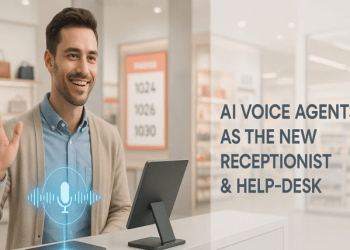Information technologies are currently used in almost all spheres of society. In recent decades, they have been actively integrated into medicine. We will talk about medical informatics and its prospects and the world in this article.
Every year, information technologies are more and more actively introduced into all spheres of human activity, in particular, into the field of health care. In the European Union, for example, during the last 15 years, about 500 million euros were directed to scientific research in the field of medical informatics.
Medical information technologies are a set of methods and means that allow processing medical data in integrated technological systems for the creation, use, storage, transmission and protection of an information product. The application of medical information technologies occurs when solving tasks in the field of medical information systems.
A medical information system is a tool that allows you to determine and plan all the resources of a health care facility through the use of specialized software, computer equipment, necessary medical equipment, and communication tools, and supports medical-diagnostic, financial, administrative, accounting, and service activities of the institution to provide quality medical services to patients. A medical information system can be universal or specialized and needs roseville seo.
Specialized medical information systems take into account all the peculiarities of activity in a specific health care institution, and therefore are more effective. Universal ones use common components of indicators, which are typical for most health care institutions and their divisions. The use of the medical information system makes it possible to monitor the effectiveness and efficiency of the treatment process and rehabilitation of patients.
The importance of medical information technologies for the development of modern medicine
Medical informatics significantly improves the work of the health care system, makes medicine accessible to the population, and the process of providing medical services is more efficient. This is possible thanks to changes in the organizational issues of the system, which increase the quality of the provision of medical services while simultaneously reducing financial expenses for their provision. At the same time, information technologies contribute to the improvement of the work of all components of the health care industry: they make it possible to simplify patient registration, organize and reduce the working hours of specialists, keep automatic records of the bed fund, control the prescription of drugs, simplify the management and obtaining of statistical data.
The world experience in the development and application of information technologies testifies to the unlimited potential of this field in solving social problems of society.
Experience of implementing information technologies in global medical practice
Directive A58/21 of the World Health Organization states that electronic health care “…opens a unique opportunity for the development of public health care. Strengthening health care with the help of an electronic health care system can contribute to the realization of basic human rights as a result of increasing the level of justice, solidarity, quality of life and quality of health care.
Electronic health care (eHealth) makes it possible to effectively solve tasks in the field of health care with the help of information and communication technologies, regardless of the geographic location of the doctor and patient.
Thus, the USA is already carrying out a large-scale reform of the health care system aimed at the use of electronic medical records and the introduction of telemedicine . Today, the USA is the country where telemedicine is most successfully integrated into the national health care system.
In 2005, the European Union took the initiative to introduce information technologies into the medical sector of the participating countries. Each country was asked to independently develop a national strategy for the use of information technologies in the medical field. In the future, these strategies should become the basis for the formation of a pan-European program. Therefore, in most European countries, great attention is paid to the development and implementation of national health care informatization programs. They aim to unite the country’s health care institutions into one network and ensure the formation and storage of his medical data in electronic form throughout the patient’s life.
For example, Great Britain has been implementing the national project “Connecting for Health” since 2004 and is a leader among European countries. It focuses on the implementation of health passports using automated data entry and prescription systems.
When considering technology that increases and optimizes data input and sharing, it’s important to remember to keep the data secure. Check out the infographic below to see the impact of cybersecurity in healthcare!
Infographic provided by MCRA, an FDA regulatory consultant for medical devices









